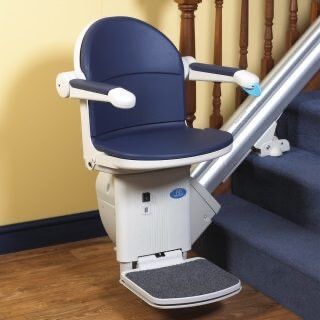
How the elderly can live longer and longer at home
It has been a trend for some time that the elderly are living at home longer and longer. Logical because nowhere is as nice as your own home and if you can and manage to continue living at home, possibly with some assistance resources, then that's only right?
Staying at home is a must
When I did an internship in a nursing home over five and twenty years ago, people of ages five-six and seventy lived here as well. These were often the partners of an elderly person who had to go to the nursing home and after the death of their partner simply continued to live in this nursing home. Something unthinkable nowadays. Anyway, you don’t get together in a nursing home anymore, but also elderly people don’t get here easily anymore.
People would like to live independently at home for as long as possible.
Living independently as long as possible
Over 93% of the 2 million people aged 65 and over live independently, and over 86% of the 1 million people aged 75 and over. Even of the quarter million Dutch people aged 85 and older, 70% still live independently. About 100.000 elderly people live in a nursing home and about 50.000 elderly in a nursing home.
In these homes, the average age of elderly residents is around 85 years old.
Elderly people are now extra vulnerable
The Netherlands has about 850.000 elderly living independently with moderate or severe physical disabilities. More than half of them have such limitations that they need care. Vulnerable are especially independent living seniors with severe disabilities who are single.
This vulnerability is increasing just now because of the corona pandemic.
Suitable housing for the elderly
Many elderly people live in unsuitable housing. A suitable home is the so-called zero step house and the presence of home modifications in kitchen and washrooms. Of the elderly with severe disabilities, about one-third live in an ordinary home with stairs and no modifications.
In addition, there are elderly who cannot climb stairs in a home with an outside staircase.
Home modifications
Large-scale modifications to the housing stock by, for example, installing elevators or improving general accessibility can increase the number of homes suitable for the elderly. The vast majority of elderly households in the Netherlands live in homes that can be made suitable for independent living even with increasing health problems. Many people develop ailments in old age and, for example, difficulty climbing stairs.
And thresholds can also become quite an obstacle. But many such obstacles in the home can be removed at relatively low cost.
Living longer independently with a stairlift in the home
To help the elderly live independently at home for longer it is important to strengthen their self-reliance. Stairlifts can make a significant contribution to achieving this goal. Stairlifts are available in different price ranges, even used stairlifts that meet today's requirements.
You don't buy a stairlift lightly, so it's a good idea to weigh up the pros and cons first.
Elderly people do not move easily anymore
The importance of suitable or adaptable housing is great, as the elderly are very sedentary. Elderly people rarely move at a higher age, and then especially when staying in the current home is no longer possible and circumstances more or less force a move. If this is not necessary, then they will prefer to continue living in their own home with modifications, and rightly so, as I can well understand that moving out of a home where you may have lived for so long is not desirable!
And don't you want to see your parents living in their own home for as long as possible?